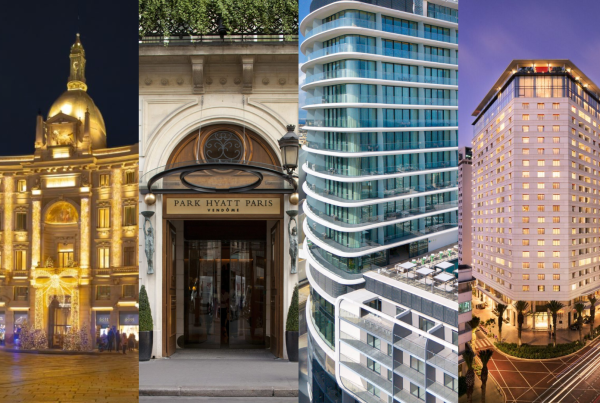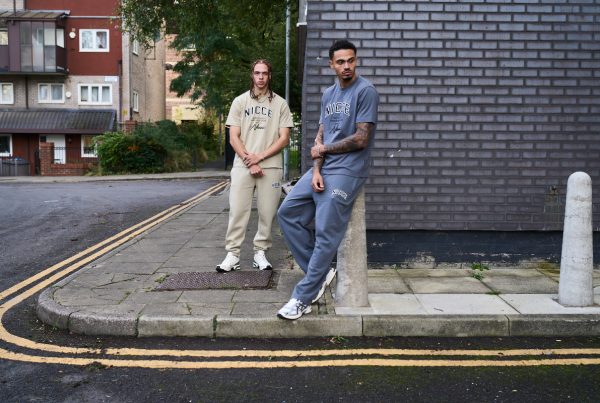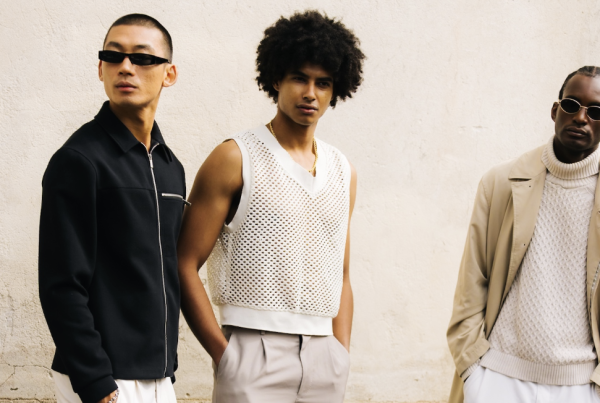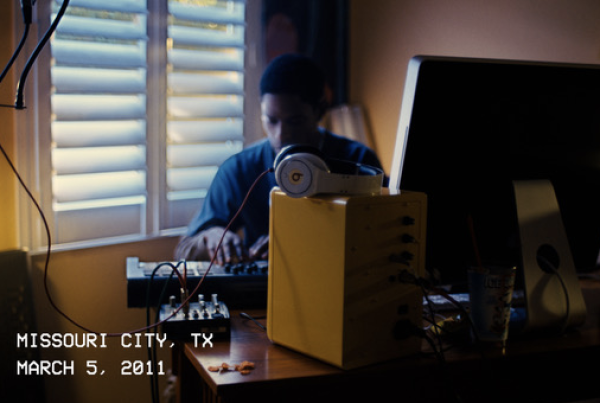Eye candy for all as this pink-strong collection walks at Paris Fashion Week.
Designer Chitose Abe had the models kicking up a (dust) storm as they presented a complex and well thought out set of designs for the Sacai Spring Summer 2017 collection, inspired by Stanley Kubrick’s A Clockwork Orange. The mesh, knitwear and a lot of nylon gave off a retro sportswear ora, although we are given a few tailored pieces which hold the collection together. Phrases such as “oddy-knocky” and “Horrowshow” are plastered on t-shirts underneath the layered outfits, most of which sporting circular badges.
Stripes, tassels and checks are busy on the eye but does not give us a lack of intrigue, for sure. See the full Sacai Spring/Summer 2017 Collection which showcased at Paris Fashion Week below:









































Eye candy for all as this pink-strong collection walks at Paris Fashion Week.
Designer Chitose Abe had the models kicking up a (dust) storm as they presented a complex and well thought out set of designs for the Sacai Spring Summer 2017 collection, inspired by Stanley Kubrick’s A Clockwork Orange. The mesh, knitwear and a lot of nylon gave off a retro sportswear ora, although we are given a few tailored pieces which hold the collection together. Phrases such as “oddy-knocky” and “Horrowshow” are plastered on t-shirts underneath the layered outfits, most of which sporting circular badges.
Stripes, tassels and checks are busy on the eye but does not give us a lack of intrigue, for sure. See the full Sacai Spring/Summer 2017 Collection which showcased at Paris Fashion Week below:









































Trends sometimes pop out of nowhere and take people by surprise. In the last installment of There’s Something Missing From Your Suit, the sudden resurgence of the Collar Bar takes place.
The Collar Bar was originally designed to keep the collar in a neat shape and to lift the tie, giving it slightly more prominence. But, as with most things in fashion, it dipped in popularity, and was replaced by collar buttons.
An unflinching demand for all things vintage has brought collar bars back into the fore. But before you start making holes in the collars of your shirts; please note that shops do sell shirts specifically made for collar bars.
Although collar bars are supposed to support the tie and keep the collar in place, the current trend is to wear the collar bar without a tie, thus turning the bar into a key accessory. Wearing a collar bar without a tie turns a suit from formal to a more relaxed affair, whilst looking sharp.
So there you have it. PAUSE’s guide to becoming the ultimate suit wearer.
Go forth and shop.
By Nathan Agyekum
@MasterNath
Eye candy for all as this pink-strong collection walks at Paris Fashion Week.
Designer Chitose Abe had the models kicking up a (dust) storm as they presented a complex and well thought out set of designs for the Sacai Spring Summer 2017 collection, inspired by Stanley Kubrick’s A Clockwork Orange. The mesh, knitwear and a lot of nylon gave off a retro sportswear ora, although we are given a few tailored pieces which hold the collection together. Phrases such as “oddy-knocky” and “Horrowshow” are plastered on t-shirts underneath the layered outfits, most of which sporting circular badges.
Stripes, tassels and checks are busy on the eye but does not give us a lack of intrigue, for sure. See the full Sacai Spring/Summer 2017 Collection which showcased at Paris Fashion Week below:









































Trends sometimes pop out of nowhere and take people by surprise. In the last installment of There’s Something Missing From Your Suit, the sudden resurgence of the Collar Bar takes place.
The Collar Bar was originally designed to keep the collar in a neat shape and to lift the tie, giving it slightly more prominence. But, as with most things in fashion, it dipped in popularity, and was replaced by collar buttons.
An unflinching demand for all things vintage has brought collar bars back into the fore. But before you start making holes in the collars of your shirts; please note that shops do sell shirts specifically made for collar bars.
Although collar bars are supposed to support the tie and keep the collar in place, the current trend is to wear the collar bar without a tie, thus turning the bar into a key accessory. Wearing a collar bar without a tie turns a suit from formal to a more relaxed affair, whilst looking sharp.
So there you have it. PAUSE’s guide to becoming the ultimate suit wearer.
Go forth and shop.
By Nathan Agyekum
@MasterNath


Why men’s fashion?
I love the boundaries and the frame that men’s fashion provides – boundaries of functionality, practicality, comfort and proportions. The often unnecessary and purely aesthetic elements in women’s wear are not compatible with my idea of combining function and aesthetics to create progressive and innovative fashion. I enjoy the challenge of having to be creative and inventive in a tighter frame, I love the attention to detail and craftsmanship. There was a time when I did women’s wear, when I truly doubted my talent and ability to actually create fashion. The passion and motivation came back when I changed to men’s wear and I am satisfied with my design and outcome.
Where did your love for fashion design begin?
I always knew that I wanted to work in a creative “hands-on” trade. My interests changed from interior design to cooking to architecture. Sewing and creating garments was something I did from an early age and my grandmother was a great inspiration. I love the practical aspect of working with my hands, with fabrics, different materials, textures and techniques. The most essential interest lies in the human body and its different shapes and figures and special features that require different attention when covering and dressing it. When it came to the final decision after I finished my A-levels, I knew that creating fashion was not only an interest but a passion and so I studied fashion design.




Your collection “Rewind to the Future” consists of bold and rich colour palettes, what was the inspiration for this collection?
The inspiration for my collection can be found in my home- Southern Africa. I created a collection based on the trials and tribulations of young men from Cape Town in the post-apartheid generation. I wanted to create a fashion collection for and with men from Cape Town, integrating their current interests and intentions considering all racial and social backgrounds.
The vast majority of black men still wait and hope for a more valuable life with secure jobs and better money. At the same time they get caught in passiveness and decadence, expecting the government to resolve the situation.
White men remain in a similar decadence, enjoying their relatively comfortable lifestyle, safe jobs and financial security. They do not take their historical responsibility to take an active part to unwind the racial tensions.
Non-the-less an inherent hope for a relaxed atmosphere between the different cultures plays an equally important role on both sides.
The elements of hope and decadence are depicted in my colour palette. The different textures, the knitwear, the patterns and the patchwork represent the differences within the society. At the same time they show that everything can be combined and come together.
The collection aims to show that fashion should be a tool to overcome the obvious challenges, by giving everyone the same chance to show a part of their personality and background through the canvas of their clothes.
Tell us the challenges you faced during the process of creating your designs.
The greatest challenge was to create designs that would truly depict my research and maintain the authenticity that I demand from my own work. I reworked, redesigned and tweaked for weeks and managed to improve and perfect the collection. This process demanded great stamina, as it is easy to lose the perspective of having to create a final 3D product and get lost in the illustrations.
During the production process I faced many challenges as some of my techniques were not previously tried and tested. Some of my results needed to be improved and amended until I was happy with their appearance and effect within the collection.
However, some of the less tested techniques added an aesthetic to my collection that I had not intended. This “design-by-accident” provided exactly the individuality and authenticity that I wanted to define my collection.




How important is it to get a MA in fashion design?
It was immensely important for me! This year of intense work and at times great pressure highlighted abilities in myself that I didn’t know I had.
Having an MA in fashion is important to learn how to work independently, how to create fashion that moves away from the commercial trends. Finding inspirations which seem to have no obvious connection to the fashion world as we know it, and turning them into garments or a whole collection is essential in the highly competitive fashion market and is not taught during a BA degree.
The MA taught me to trust my individual style, intuition, passion and turn them into fashion which I believe to essential to work in the industry.
What advice would you give to another street wear designer?
Work with you wearer’s, talk to them, let them tell you what they want and need and only then add your style, your design – collaborate!!! Street wear is called that because it evolves from within the streets. It shouldn’t be purely dictated by you as a designer. It’s collaboration that creates the authenticity which defines the term “street wear”.
What’s next for you?
Finding a job that allows me to show my strengths, improve my weaknesses and have the ability to create authentic fashion with people who will wear it and not alone for people who will wear it. I want to continue to create cool, innovative and sporty menswear. At some point in the next years I would like to do this in Cape Town/ South Africa and eventually create my own label … I want definitely want to create more fashion – however!!!


Interviewed by Johnson Gold


























































